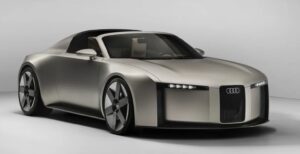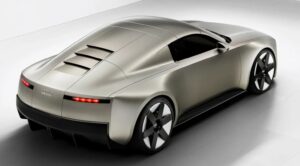Audi’s New Era: The Concept C
Audi’s New Era: The Concept C
Audi is making a bold statement with the Concept C, a car that signals a complete shift in the brand’s philosophy and design direction. Led by a new team, Audi is moving away from its recent complex and aggressive designs toward a cleaner, more sophisticated look. This concept car isn’t just a design study; it’s a preview of an all-electric sports car set to go into production in 2027.
Design and Inspiration
The Concept C is a clean-sheet design that draws on Audi’s rich history, specifically the 1930s Auto Union Type C racer and the iconic Audi TT.
- Exterior: The car features a narrow, upright grille and a simple four-line light graphic that reflects the brand’s four-ring logo. The windscreen’s rounded shape pays homage to the original TT. The silhouette, with its shorter wheelbase and longer overhangs, is reminiscent of a compact mid-engined car. The rear is dramatic and clean, with subtle slats that nod to the Type C racer. The flat, brushed metal badge is also a notable change.
- Interior: The cabin is minimalist, with a focus on restrained design and materials like warm grey fabric, leather, and aluminum. The main infotainment screen folds away, and a narrow display above the steering wheel shows only speed, giving drivers the option to go screen-free.
Technology and Production
The upcoming production model, which is expected to be about 90% of what’s seen in the Concept C, will be built on a platform shared with Porsche’s electric 718 sports car. This platform will use a unique battery layout behind the driver to mimic the weight distribution of a traditional mid-engined sports car, allowing for a lower driving position and enhanced road feel.
This new direction, championed by Audi’s new chief design officer, Massimo Frascella, is a strategic move. By referencing its heritage, Audi aims to create a unique identity in a market where electric powertrains and digital interfaces are becoming commonplace. This shift is crucial as the brand battles a shrinking market share and looks to distinguish itself from both traditional rivals and emerging competitors.









